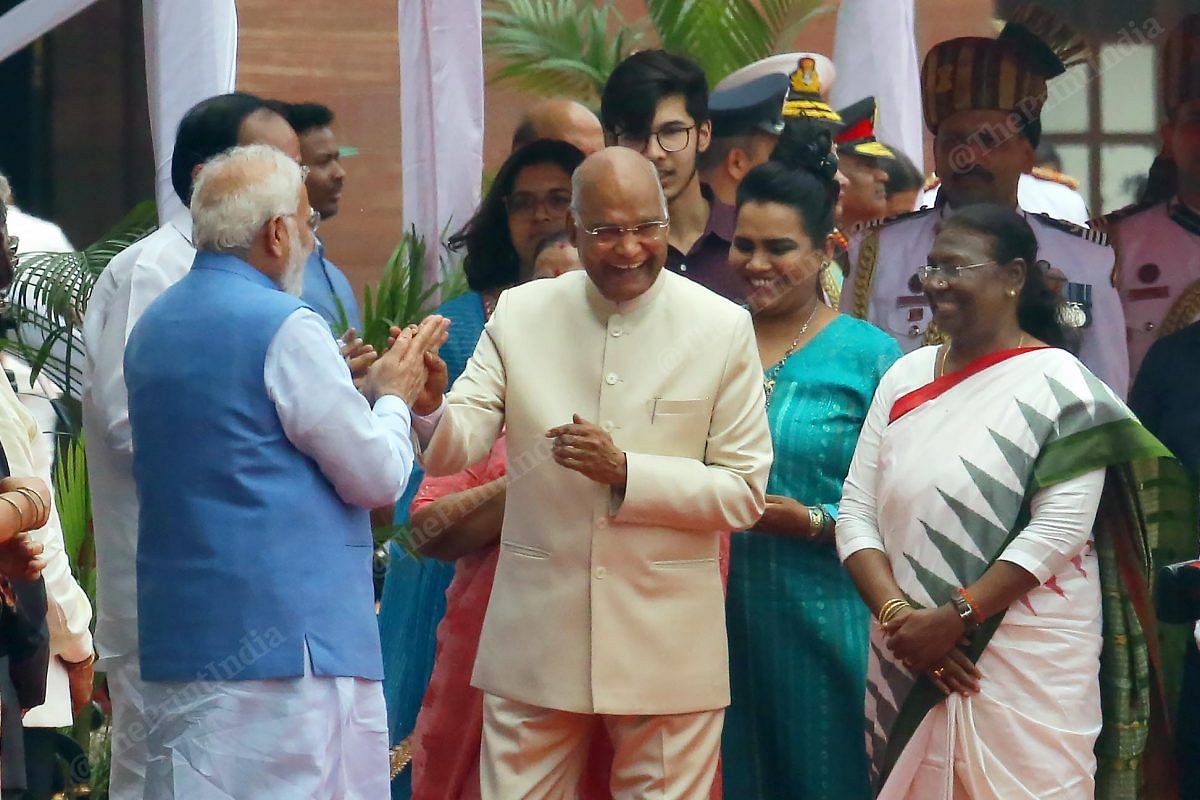For decades, the Congress party has masqueraded as the messiah of the downtrodden—Dalits, minorities, and the backward. But time and again, it has shown that its concern for the Dalits is little more than tokenism wrapped in hollow symbolism. The elevation of Mallikarjun Kharge as Congress president was touted as a historic move. But the truth is, Kharge, a veteran Dalit leader with decades of service, has turned out to be nothing more than a ceremonial rubber stamp for the Nehru-Gandhi family. The real power, everyone knows, still rests in 10 Janpath.
Need proof? Just recall Kharge’s awkward response when asked about a possible leadership change in Karnataka—a state where he hails from. “I don’t know what the high command is thinking,” he said, shrugging like an outsider. This is the man who is supposed to lead the Congress party. And yet, he is completely in the dark about key political decisions in his own state. What does that say about his authority? Absolutely nothing—because he has none.
Congress’s track record with Dalit leadership has always been dubious. Yes, they made Damodaram Sanjivayya the first Dalit Chief Minister of Andhra Pradesh in the early 1960s. But he was never allowed to operate independently. Ditto for Sushil Kumar Shinde in Maharashtra or Charanjit Singh Channi in Punjab. Channi, a surprise pick before the 2022 Punjab elections, was paraded around as the “first Dalit CM of the state.” But when the party lost miserably, he was immediately dumped like yesterday’s news. There was no introspection, no acknowledgement of missteps—just scapegoating and silence.
And now, the Wayanad episode has peeled back the mask completely. The Congress party could not even show the courtesy of allowing its “national president,” Kharge, the dignity of proposing Priyanka Gandhi Vadra’s nomination papers for the bypoll. Instead, Rahul Gandhi signed them. So much for respecting the Dalit face of the party! In full public view, Kharge was humiliated, reduced to a side character in a tightly controlled dynastic drama. His position, it seems, is useful only as long as he sticks to the script and obeys orders.
This isn’t a new pattern. Back in the days of Dr. Manmohan Singh’s premiership, another so-called minority outreach, the party bypassed its own intellectual powerhouse—Pranab Mukherjee—because the family didn’t want a leader who might not take orders. And when PV Narasimha Rao, another non-dynast who rose to the top, proved that a Congress Prime Minister could function effectively and independently, the Gandhi family responded with venom. Upon his death, the party refused to grant him a proper samadhi in Delhi. His body was flown back to Hyderabad in what many consider the most disgraceful and deliberate insult to a former Prime Minister—and Telugus at large.
It’s not just the national leaders who have been slighted. Look at what happened in Haryana. Kumari Selja, one of the tallest Dalit voices from the state and a loyal Congressman, was treated with contempt and passed over repeatedly for leadership roles. Her ouster from the state party president’s post was abrupt, unexplained, and reeked of caste indifference. The message was clear: Dalits can be showcased, but never empowered.

Contrast this with the BJP-led NDA government. Critics may call it a party of the privileged, but its actions tell a different story. It was the BJP that gave India its first Dalit President in Ram Nath Kovind. And when his term ended, it didn’t stop there—the NDA went a step further and made Droupadi Murmu, a tribal woman from Odisha, the country’s first tribal President. This was not just tokenism but a seismic shift in how power is distributed and perceived in Indian politics.
Moreover, Dalit leaders like Ramdas Athawale, Sanjay Paswan, and others within the BJP ecosystem are not just decorative—they are given ministerial responsibilities, space to voice their concerns, and respect within the party structure. One may disagree with the BJP’s ideology, but when it comes to honouring its own Dalit leaders, the contrast with Congress couldn’t be starker.
This raises the most crucial question: Should Dalits across the country continue to be pawns in the Congress party’s cynical political chessboard? Should they be content with being made showpieces in election seasons, only to be discarded and disrespected once the votes are cast?
The Congress party, in its desperation to remain relevant, continues to rely on the optics of representation without offering real power or dignity. Meanwhile, the BJP—regardless of ideological criticisms—has backed its words with appointments that have broken historical barriers.
It’s high time India’s Dalits looked beyond the rhetoric and judged parties by their actions, not their slogans. Because if history is any indicator, the Congress may offer the chair, but never the authority. The BJP, at the very least, seems to be offering both.






